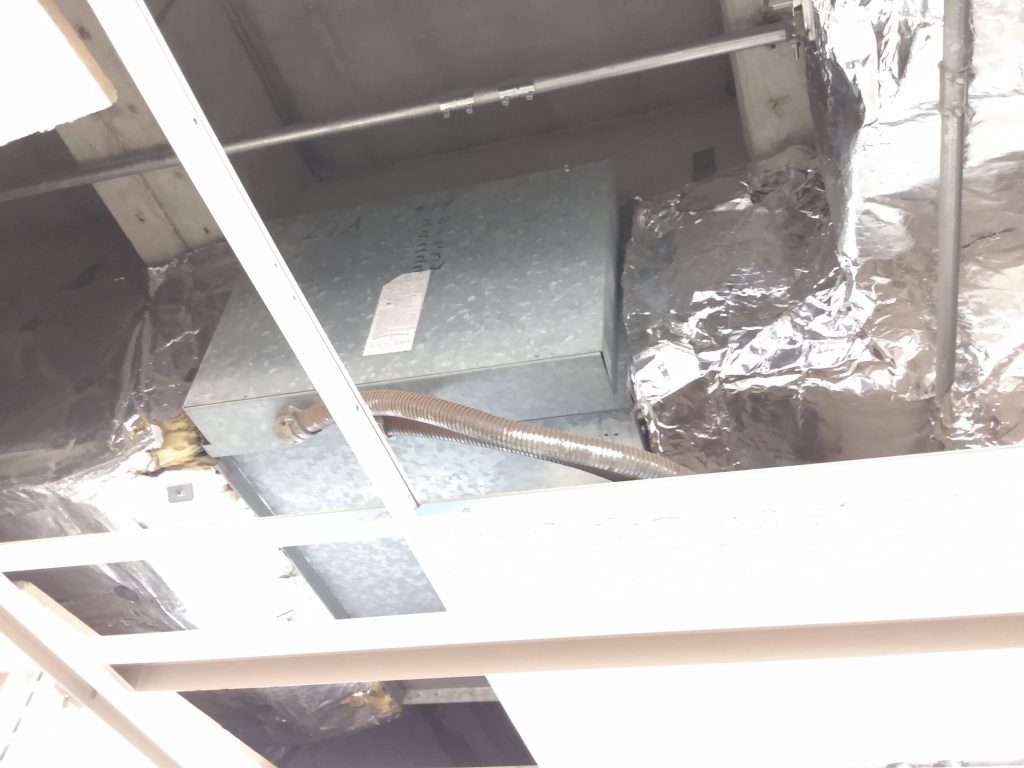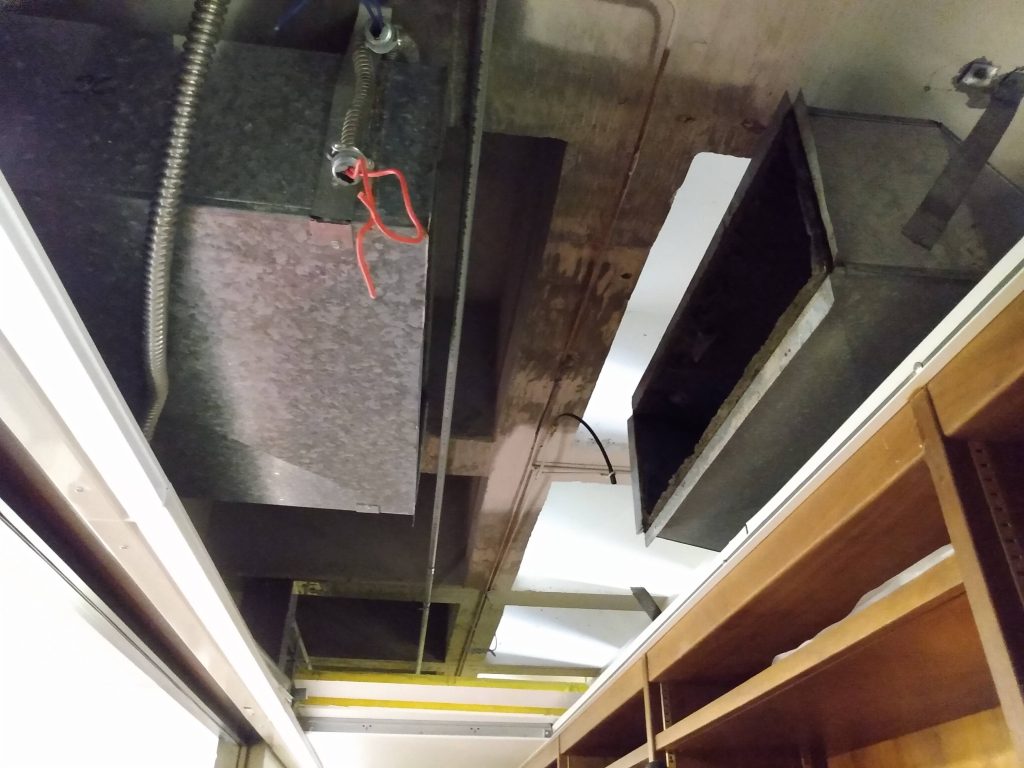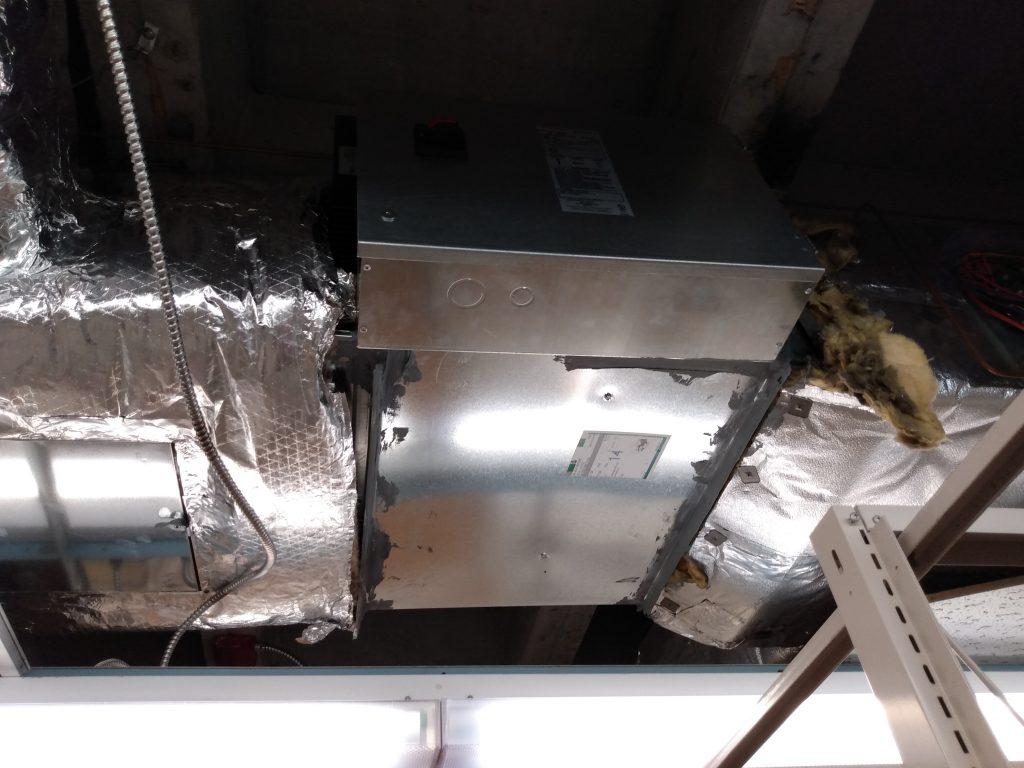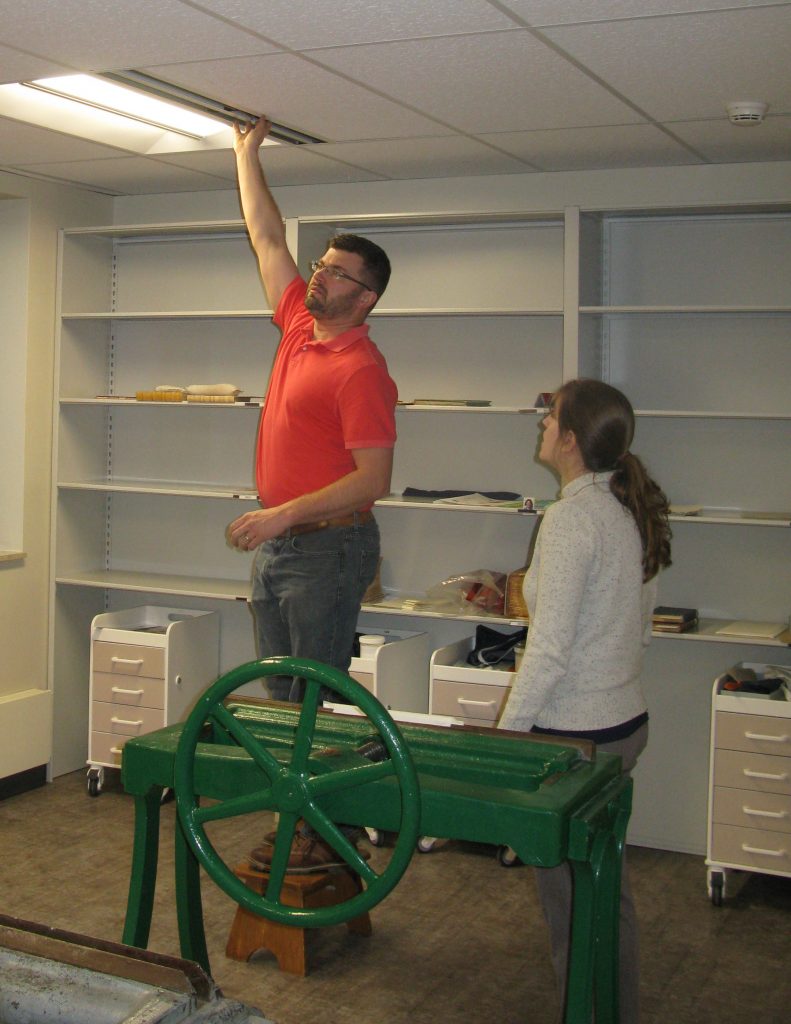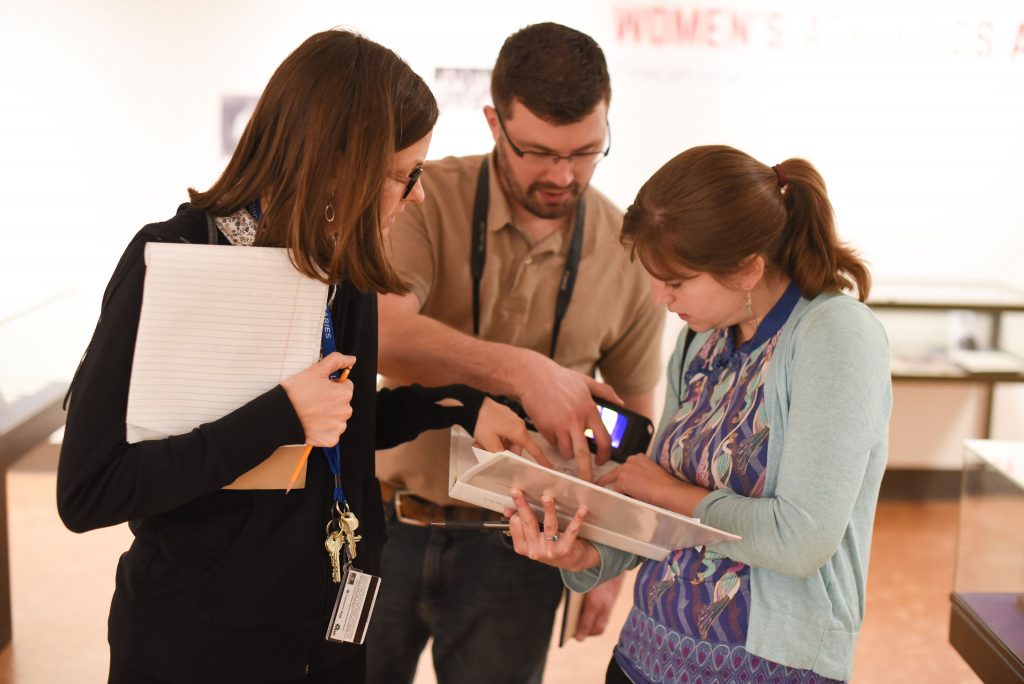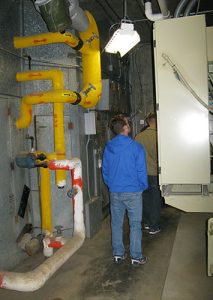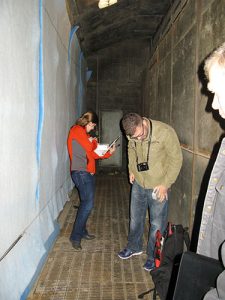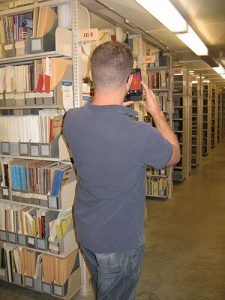Improving Energy Efficiency in Collection Storage in Spencer Research Library
February 21st, 2023KU Libraries was awarded an implementation grant from the National Endowment for the Humanities, under the Sustaining Cultural Heritage Collections program. The purpose of the grant is to act on the findings of environmental consultants from a planning grant under the same program, with the goal of improving the heating, ventilation, and air conditioning (HVAC) system in collections storage areas of Spencer Research Library. The ultimate goal is to better preserve our collections while also finding ways to save energy.
While we have run into pandemic challenges, such as global shipping delays on key equipment, we are happy to report that the project is now in full-swing. Thirty-six heating units in the HVAC system that were identified as malfunctioning or underperforming are currently being replaced. Spencer Library’s HVAC system is largely still original to the building, which opened in 1968. The heating units are controlled pneumatically, which is not the standard today. Fewer and fewer HVAC technicians are trained to service pneumatic systems, so that when individual units break it is difficult and costly to fix them. This project upgrades the heating units to electrically-controlled, modern ones.
After walking the building with the contracted engineering firm, staff in Conservation Services covered collections storage shelving in areas near the heaters to be upgraded. Sometimes getting into the ceiling and removing equipment can result in emergent dust, so we wanted to preemptively protect the collections.

The contractors first removed ceiling tiles under the heating units to be upgraded in order to have the best clearance to de-install the old heaters and install the new.
The new heaters are currently being installed, with an engineering firm partnering with electricians to hook up the new heaters and update circuitry where necessary.

After the heaters are installed, we will conduct testing and balancing to confirm that air is flowing and the heaters functioning properly. We will continue to monitor the temperature and relative humidity in collections areas long-term to ensure that the equipment properly controls the environment in collection spaces.
Whitney Baker
Head, Conservation Services
KU Libraries
Any views, findings, conclusions, or recommendations expressed in this blog post do not necessarily represent those of the National Endowment for the Humanities. “Improving Energy Efficiency in Collection Storage in Spencer Research Library” has been made possible by a grant from the National Endowment for the Humanities: Sustaining Cultural Heritage Collections.


